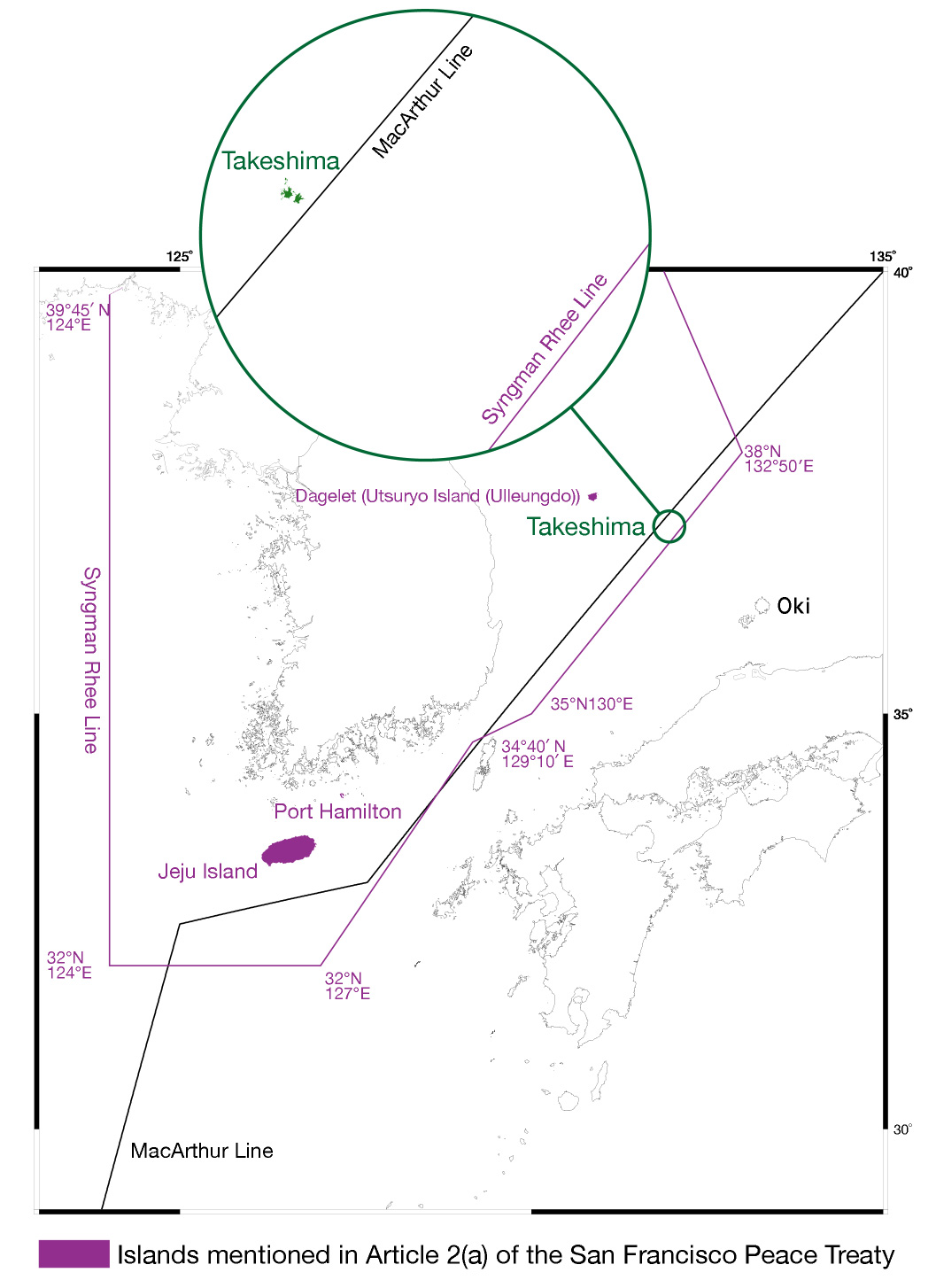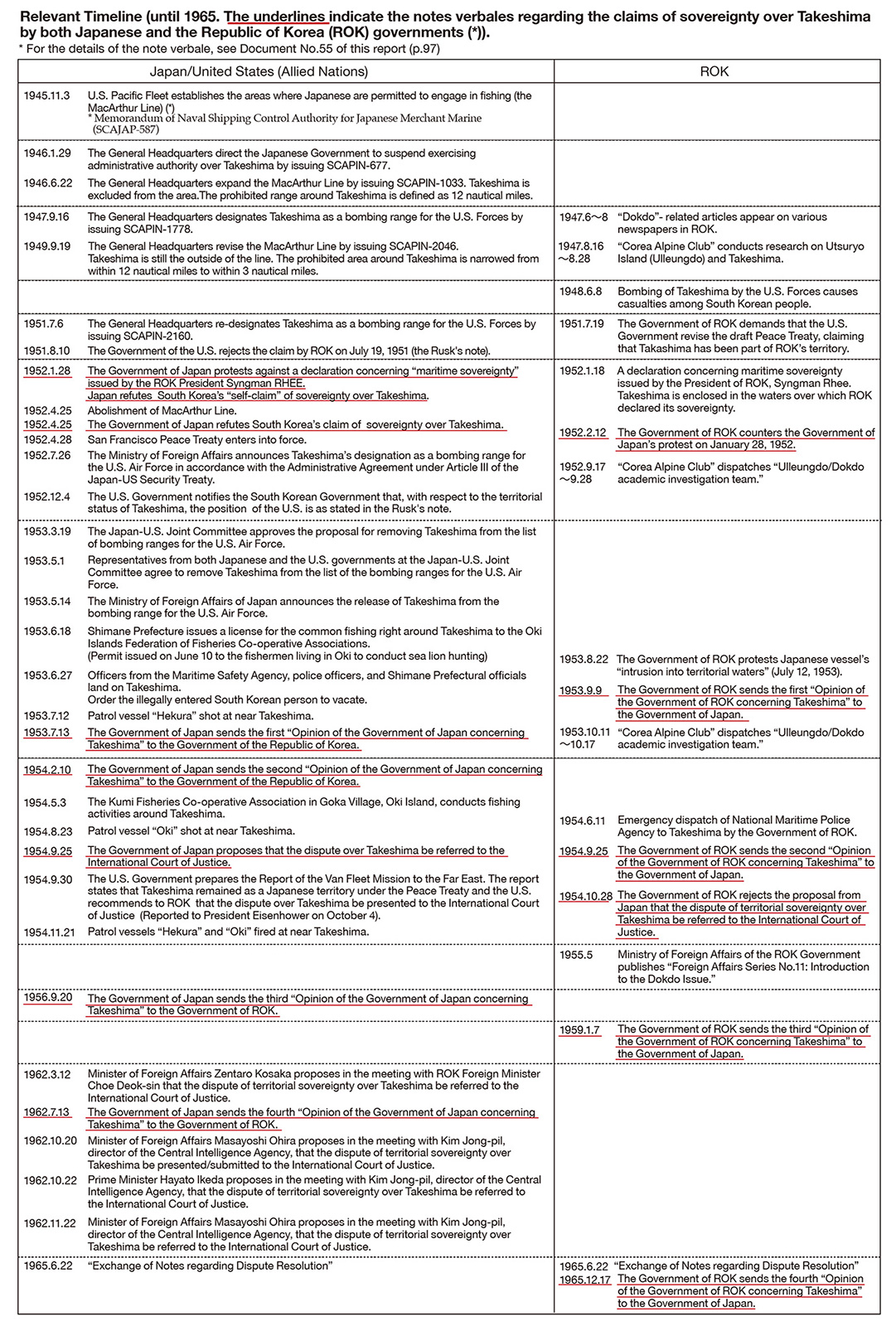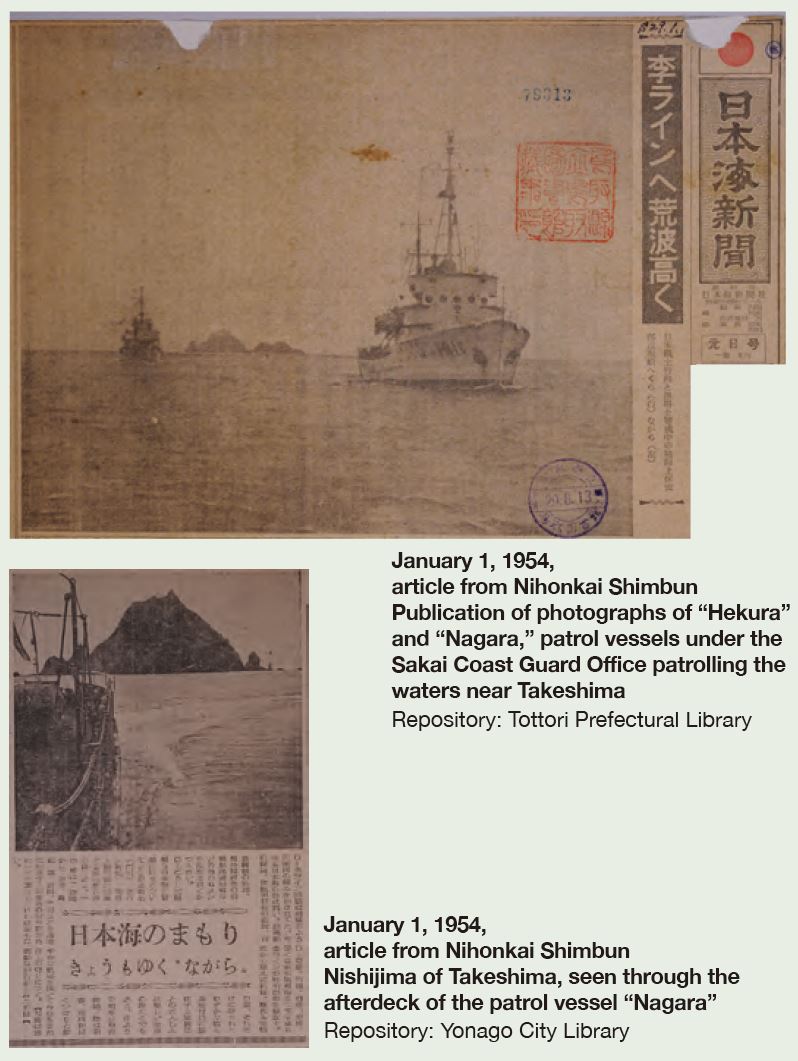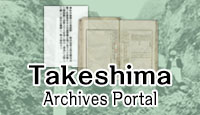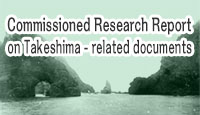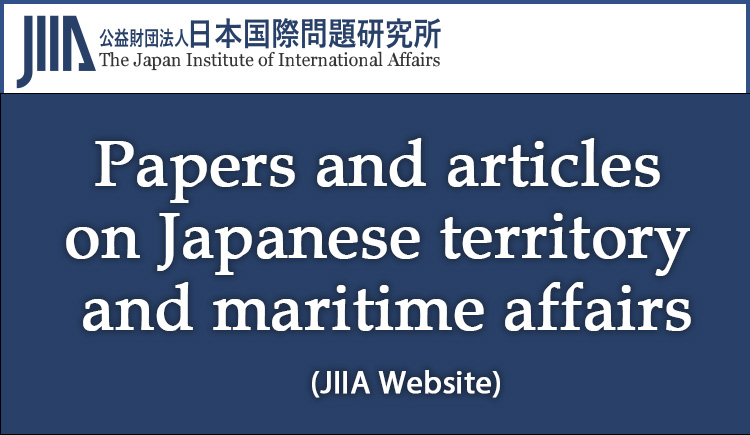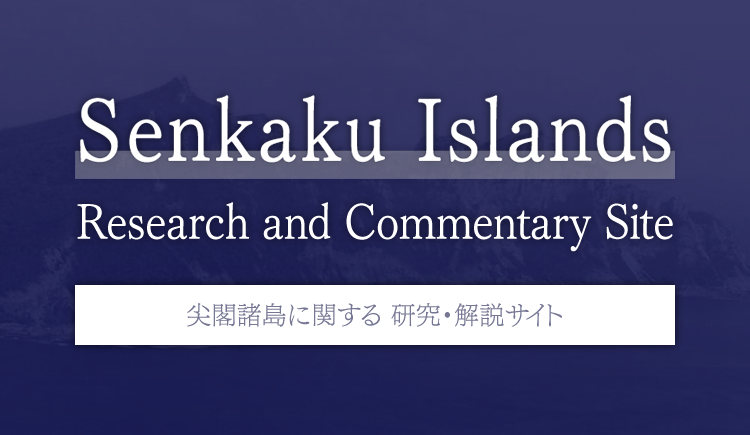The documents and materials published on this website were collected, researched, and prepared with advice from experts, as a part of a Government-commissioned project. The contents of this website do not reflect the views of the Government. Links to external sites (domains other than https://www.cas.go.jp) are not under the management of this site. For linked websites, please check with the organization/group that manages the website for the link in question.
Commentary on themes by historical period
Classification by historical periods IV
After the issuance of the
declaration concerning “maritime sovereignty” by the President of South Korea From January 1952
~
(1) South Korea’s illegal occupation of Takeshima, and intense exchange of notes verbales between Japan and South Korea
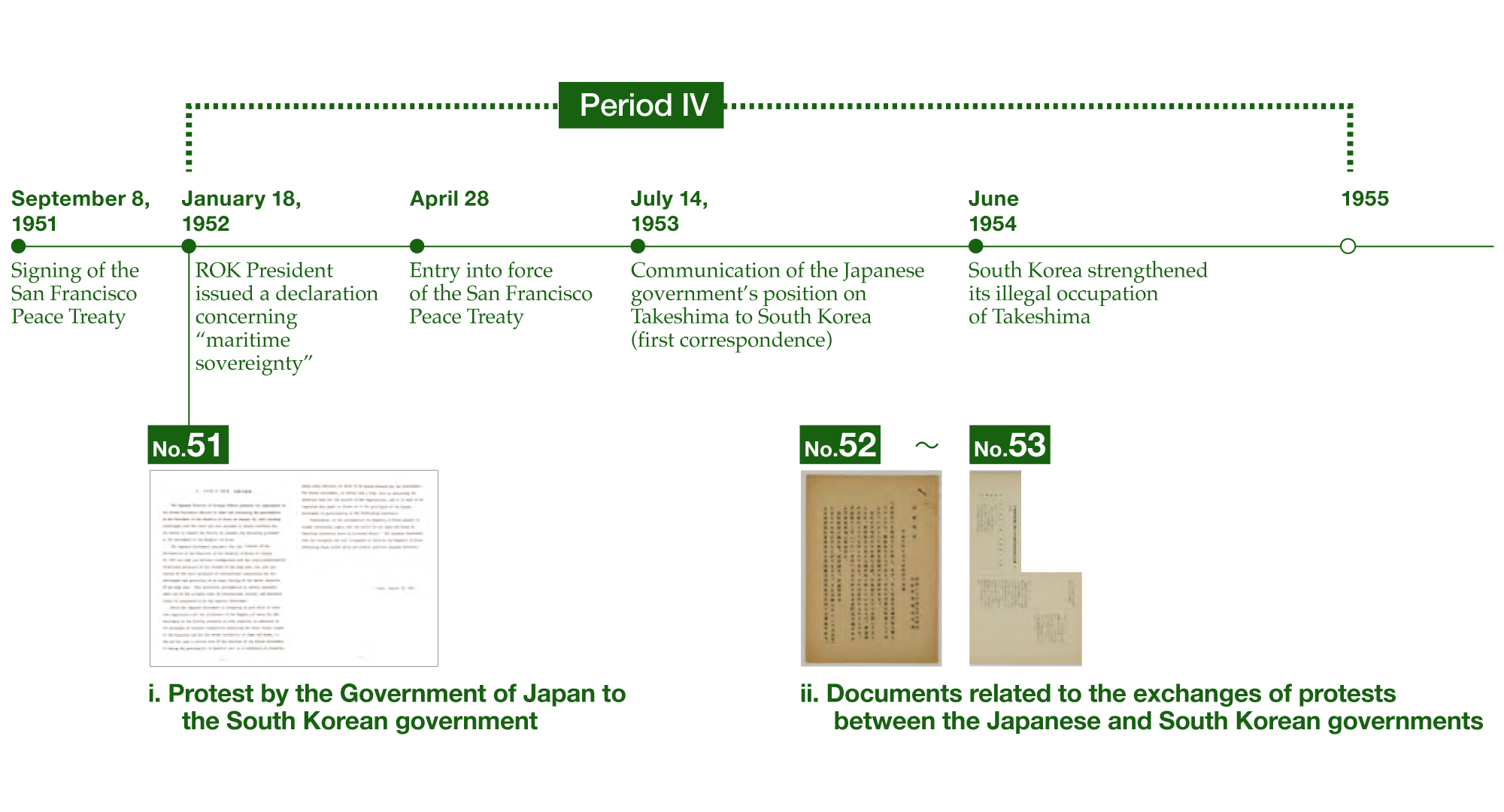
1. Unilateral establishment of the “Syngman Rhee Line” and illegal occupation of Takeshima
As explained earlier, the San Francisco Peace Treaty clearly established that Takeshima is a part of Japan’s territory.
However, President Syngman Rhee of South Korea unilaterally set up the so-called “Syngman Rhee Line” on January 18, 1952, prior to the entry into force of the San Francisco Peace Treaty(in April of same year) and in violation of international law. South Korea asserted unilaterally that the vast area of the sea lying within this line falls under its fishery jurisdiction, and included Takeshima within this area.
In response, the Government of Japan sent a note verbale dated January 28 the same yearNo.51in protest to the
South Korean government (*1)..
Thereafter, in June 1954, South Korea dispatched the South Korean Coast Guard to Takeshima, making its illegal occupation of Takeshima definitive.
2. Exchanges between Japan and Korea ※Refer to the related chronological table
Including the abovementioned one dated January 28, 1952No.51 the notes verbales exchanged between the two governments regarding the
Takeshima dispute totaled 32 in number from the Japanese side and 24 from the Korean side before
1965 when the two governments signed a treaty to normalize their diplomatic relations.
On July 13 1953, the Government of Japan sent “the Opinion of the Government of Japan concerning
Takeshima,” which stated in detail that Takeshima is a Japanese territory and that it is duly
justified (the first note verbale)No.52
No.53, on February 10, 1954 (the second)
No.54, on September 20, 1956 (the third), and on July 13, 1962 (the fourth)
(*2), while the South Korean Government sent a note verbale to argue against Japan on
September 9, 1953 (the first), on September 25, 1954 (the second), and on January 7, 1959 (the
third) respectively.
The Government of Japan consistently stated that the peaceful and continuous control over
Takeshima, as seen in its incorporation into Shimane Prefecture in 1905, is the basis of ownership
of Takeshima under international law. At the same time, the Japanese side requested the South Korean
Government to show their grounds for their claim that the government in the Korean Peninsula had
sovereignty over Takeshima prior to that date.No.55.
In addition, the Government of Japan proposed in the note verbale of September 25, 1954 that the dispute of territorial sovereignty over Takeshima be referred to the International Court of Justice, but the South Korean Government rejected this proposal in its note verbale of October 28, 1954.
*1 On February 11, 1952, the United States expressed deep concern that South Korea’s
declaration concerning “maritime sovereignty” violated the rights enjoyed by all countries on the high
seas, and pointed out the possibility that recognition of this declaration could lead to any country
issuing declarations unilaterally and converting the high seas into territorial seas.
*2 The note verbale of February 10, 1954, is available for viewing on the Takeshima
Archives Portal (“On the proposal to the Government of the Republic of Korea that the dispute over
territorial sovereignty over Takeshima be referred to the International Court of Justice,” November
1954, in“Overseas Survey Monthly Report” Vol. 4, No. 11, Public Information and Cultural Affairs
Bureau of the Ministry of Foreign Affairs, Japan).
Patrols by the Maritime Safety Agency
- Occurrence of shooting incident
Shimane-maru, a research vessel under the Shimane Prefecture Fisheries Research Institute, was
conducting a survey on the development of the Tsushima warm current on May 28, 1953. Upon landing on
Takeshima to conduct a field survey of the island, the crew discovered South Korean fishermen on the
island and reported this to the Shimane Prefectural Government. After that, as stated previously,
the 8th Regional Maritime Safety Headquarters of the Maritime Safety Agency carried out patrol
operations of stowaway and poaching activities around Takeshima from June 22 to June 28.
On July 12, 1953, dozens of shots were fired from Takeshima at the patrol vessel “Hekura” sailing
under the Sakai Coast Guard Office of the 8th Regional Maritime Safety Headquarters near Takeshima.
Thereafter, more incidents of shooting at patrol vessels occurred on August 23 and November 21,
1954.
Through our research, we uncovered a full-page article dated New Year’s Day, 1954, with photographs
of the patrol vessels “Hekura” and “Nagara” under the Sakai Coast Guard Office patrolling the waters
near Takeshima, as well as an article and photograph dated January 12 the same year about the
activities of the patrol vessels. Both of these articles were published in Nihonkai Shimbun.
Takeshima
Research and Commentary Site
- I Comprehensive issues
- II Commentary on themes by historical period
- III Analysis of claims by other countries

